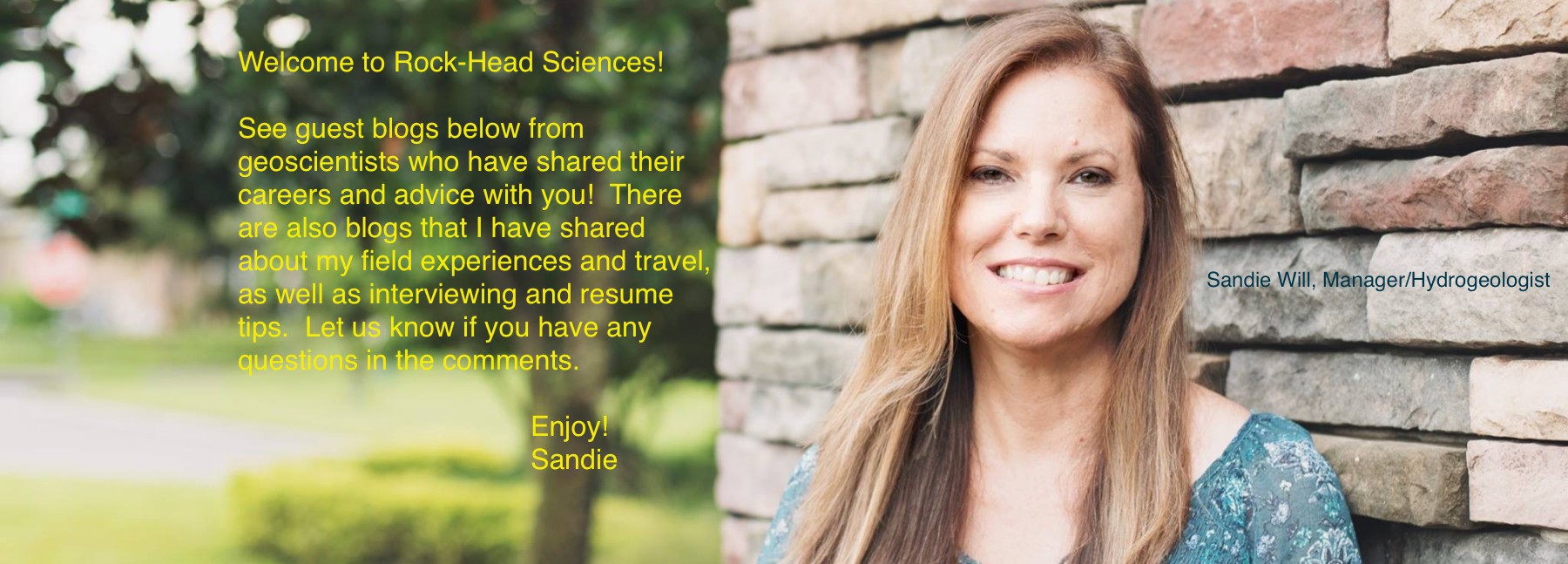NAME: Alison Graettinger
CURRENT TITLE: Postdoctoral Scholar
AREA OF EXPERTISE: Volcanology
YEARS EXPERIENCE: 8
EDUCATION: 2 yrs master’s, 1 yr research assistant, 3 yrs PhD, 2 yrs post doc
WEBSITE: http://agraettinger.weebly.com/
What’s your job like?
My work is research focused, with light teaching and mentoring responsibilities. My research focuses on experimental physical volcanology. At the moment this means making man-made, maar-type volcanoes using dynamite. The craters we make are between 1 and 3 meters wide with jets that get up to 20 m tall. We do between one and two experiments a year. So the rest of the time is spent planning experiments, analyzing results of previous blasts, writing papers, writing grants, and running a graduate student seminar. There are occasional field work and conferences that involve travel in the U.S. and internationally.
What’s a typical day like?
This depends on the time of year, but since most of the time is NOT the fun of the experiment, I’ll describe a day I would have leading to an experiment. I do all the logistical planning for our experiments, so a typical day will start with checking and replying to emails with various international collaborators (various times zones may mean this happens even at 11 pm). I’ll spend some time in my office reviewing the latest science plan and budget for the project, then consulting my to do list. This likely means I need to make a bunch of phone calls to vendors: van rentals, explosives contractors, gravel suppliers, safety coordinator, etc. Other tasks include checking on bills related to all of these purchases. I will also likely spend some time in the lab directing/helping students prepare sample bags, visual scales for videos, or occasionally filling ping pong balls to use as ballistic tracers in the videos. We may also be processing samples of ejecta from experiments, which means grain size analysis, componentry (picking out grains of different varieties), and adding all of this to our growing dataset. If I’m lucky I’ll get some time to look at some data. This could be watching high speed and high definition video to see how ejecta is transported and deposited, or all that grain size data. We integrate observational data with deposits and geophysics, so this could be any combination of datasets and softwares at any time. Likely during the day I spend time meeting with students, colleagues and my boss to discuss the progress of preparations (experiments or papers). We likely also digress into conversations about experiments we hope to do in the future on submittable grants or ideas that may remain pipe dreams. My day typically ends with deciding if the next day needs to be spent at the experimental site building up our artificial strata that exists before our ‘eruptions’ or if I need to return to the office to manage the business and computer end of the project.
What’s fun?
The experiments are of course the most fun. We make mini volcanoes to our own specifications! But I do really enjoy the design and implementation stage of this job as well. It starts from the ‘I wonder if we could’ and evolves into the actual construction of large pits full of substrates to our specifications that will be used to answer specific questions about phenomena that are observed in maar-deposits around the world. Since it is an internationally collaborative project we get insight, suggestions and good advice from a group of experts each with their own perspective. This means the final project is always so much more than I would have imagined before hand, but also something I can feel great pride in and personal satisfaction (and not just because I push the button to make the ground go boom).
What’s challenging?
The experiments, the planning and the collaborators! So the same things that make it fun are the greatest source of challenge. The logistics of an experiment this size and the group this size means it takes a good amount of patience and practicality to make it happen. We have a limited budget, and limited time (though time always seems to be a greater factor), and we all have to be very creative to make sure we get strong science from a feasible project. I have to worry about the strangest things (like how many portable cement mixers can fit into a 12 seater van) and make quick stressful decisions (such as instead of a crater we have a hill, where do we put our next eruption and maintain the integrity of the experiment?).
What’s your advice for students?
My work requires a combination of scientific expertise and lots of practical knowledge (carpentry, landscaping, vacuum repair, and crafts). I suggest taking advantage of any learning opportunity that presents itself. If you assume you will never need to know something, you will miss out on opportunities to be a part of something new. Whether it is a new multi-disciplinary approach to your field using the tools of another, or creating experiments that have never been done before, you will value diversity in knowledge and experience. As scientists we are trained to be experts in a narrow field (mine is volcanology), but you can use your experience from all other aspects of your life to improve your science. Also, always give the ideas of others an honest chance, for they can provide a unique solution to a problem you thought was unsolvable.



